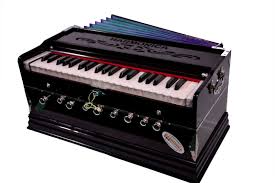
"Harmonium and Harmonica: A Tale of Resonating Harmonies"
In the realm of musical instruments, the Harmonium and Harmonica emerge as distinct yet melodically charming instruments, each weaving a unique tale of resonance, versatility, and cultural significance. From the soulful melodies of the Harmonium to the portable harmonies of the Harmonica, these instruments have found a place in diverse musical genres and cultural traditions. Let's embark on a melodic exploration to uncover the origins, characteristics, playing techniques, and cultural significance of the Harmonium and Harmonica.
Harmonium: Melodic Resonance in Bellows
Historical Heritage:
The Harmonium's origins can be traced to the 19th century, evolving from reed organs. Its popularity surged in India, especially in devotional music, due to its portable nature and rich, harmonic tones.
Design and Sound:
Crafted with bellows, keys, and reeds, the Harmonium's distinctive sound is created by air passing through reeds when keys are pressed. Its ability to produce sustained notes and chords adds depth and resonance to melodies.
Cultural Significance:
The Harmonium holds immense cultural significance in Indian classical music, devotional songs, qawwalis, and folk music. Its accompaniment role in musical ensembles and solo performances cements its place in cultural traditions.
Harmonica: Portable Pockets of Melody
Historical Evolution:
The Harmonica, with its origins in the early 19th century in Europe, gained popularity due to its portability and versatility. Its compact size made it a favorite among traveling musicians.
Design and Sound:
Featuring a series of reeds and chambers, the Harmonica produces melodies when air is blown or drawn through it. Its distinct sound, characterized by bending notes and expressive phrasing, spans various musical genres.
Cultural Adaptability:
The Harmonica's adaptability spans blues, folk, jazz, country, and even rock music. Its ability to convey emotions and melodies through expressive playing techniques like bending and vibrato showcases its versatility.
Resonant Harmony, Diverse Expression
While the Harmonium and Harmonica differ in design, tonality, and cultural origins, both instruments share a common trait—their ability to evoke emotions and melodies through their resonating harmonies.
Conclusion: Melodic Dialogues, Portable Expressions
As the Harmonium's melodic richness intertwines with the Harmonica's portable melodies, they illustrate the diverse yet harmonious world of musical instruments. Both instruments, with their distinct voices and cultural adaptability, symbolize the universal language of music—a language that transcends boundaries and resonates with hearts worldwide.
Their harmonies echo through devotional gatherings, blues clubs, folk ensembles, and musical collaborations—a testament to the enduring charm and expressive versatility of the Harmonium and Harmonica in the vast symphony of music.
The Harmonium and Harmonica, each with its unique tonalities and cultural influences, enrich the world of music with their distinct melodies and resonating harmonies, transcending borders and captivating audiences across diverse musical landscapes.
ABOUT AUTHOR : Musicintuit Admin
EXPLORE OUR ARRAY OF ONLINE MUSIC COURSES: Musicintuit Courses
ENROLL TODAY ! EXPLORE AND IMMERSE YOURSELF IN THE REALM OF MUSIC: Contact Musicintuit




